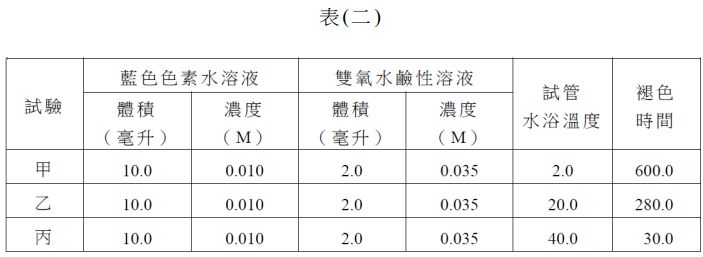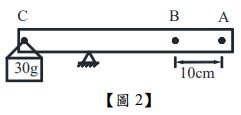

活動名稱
【解題達人! We want you!】
活動說明
阿摩站上可謂臥虎藏龍,阿摩發出200萬顆鑽石號召達人們來解題!
針對一些題目可能有疑問但卻缺少討論,阿摩主動幫大家尋找最佳解!
懸賞試題多達20萬題,快看看是否有自己拿手的科目試題,一旦你的回應被選為最佳解,一題即可獲得10顆鑽石。
懸賞時間結束後,只要摩友觀看你的詳解,每次也會得到10顆鑽石喔!
關於鑽石
如何使用:
- ✔懸賞試題詳解
- ✔購買私人筆記
- ✔購買懸賞詳解
- ✔兌換VIP
(1000顆鑽石可換30天VIP) - ✔兌換現金
(50000顆鑽石可換NT$4,000)
如何獲得:
- ✔解答懸賞題目並被選為最佳解
- ✔撰寫私人筆記販售
- ✔撰寫詳解販售(必須超過10讚)
- ✔直接購買 (至站內商城選購)
** 所有鑽石收入,都會有10%的手續費用
近期考題
Questions 40-50
【題組】41. According to the passage, what led to advances in the study of oceans?
(A) An interest in conducting ocean research on a worldwide level
(B) A disagreement between American and British
(C) The development of new global weather patterns
(D) The use of thermometers that could withstand deep ocean pressures
In the nineteenth century, oceanography benefited from the new desire to study phenomena on a global scale. Many scientists collected information on the chemical composition, temperature, and pressure of the ocean at various depths and in different
Line regions. The difficulty of gathering information about the ocean depths was immense.
At first ii was believed that the temperatures in the depths never fell below 4 degrees
Celsius, until it was shown that the figures were distorted by the effect of pressures on the thermometers. There was intensive study of tides and ocean currents; and a number of physicists examined the forces responsible for the movements of the water. For example, James Reonell provided the first accurate map of the currents in the Atlantic.
Ocean, and the United Slates Coast Survey made extensive studies of the Gulf Stream. The zoologist Edward Forbes argued that no lire existed below a depth of 300 fathoms (about 600 meters) a view widely accepted until disproved by the voyage of the British research vessel HMS Challenger(1872-1876)The HMS Challenger expedition provided valuable information about the seabed, including the discovery of manganese nodules
IS that are now being seen as a potentially valuable source of minerals.
The first detailed map of the seabed was provided for the Atlantic by the American geographer Matthew F. Maury- He devised new techniques for measuring ocean depths, and his work proved of great value in laying the first transatlantic telegraph cables. He also studied global wind patterns and was able to provide sailors with guides that
20 significantly reduced die time taken on many routes. Some oceanographers believed that the winds were responsible for producing ocean currents such as the Gulf Stream, but Maury disagreed. He argued that they were produced by changes in the density of seawater due to temperature, which Bet up systems of movement between warm and cool regions of the world. Maury believed that the circulation of a warm current would
25 produce ice-free sea around the North Pole, a claim not disproved until Fridtjof Nansen allowed his vessel The Pram to be carded to within a few degrees of the pole in the years 1893-1896.
【題組】41. According to the passage, what led to advances in the study of oceans?
(A) An interest in conducting ocean research on a worldwide level
(B) A disagreement between American and British
(C) The development of new global weather patterns
(D) The use of thermometers that could withstand deep ocean pressures
【非選題】
【題組】(9)以上(1)至(8)單元中,最不適合用於有機成分污染物去除或分離的是哪一個?【1 分】
第三題:
依照基本原理之不同,水處理可概分為物理處理單元、化學處理單元及生物處理單元,
各單元之主要功能或目標污染物不同,請寫出下列單元之主要功能或主要處理之目標污染物:
【題組】(9)以上(1)至(8)單元中,最不適合用於有機成分污染物去除或分離的是哪一個?【1 分】
83. 根據 ABACUS 訂位規則,必需在班機起飛前多久時間為旅客訂位?
(A) 班機起飛前 24 hours 訂位
(B) 班機起飛前 12 hours 訂位
(C) 班機起飛前 6 hours 訂位
(D) 班機起飛前 4 hours 訂位
(A) 班機起飛前 24 hours 訂位
(B) 班機起飛前 12 hours 訂位
(C) 班機起飛前 6 hours 訂位
(D) 班機起飛前 4 hours 訂位
【非選題】
【題組】(3)承上題,關於小明的實驗結果紀錄表(表(二)),請提出改進建議?(3 分)
4.小明看到一份資料提到藍色食用色素在雙氧水的鹼性溶液中可以快速分解
成為無色,因此做了下列實驗:
步驟1:於25.0℃下取10.0毫升0.010M的藍色色素水溶液於試管中。
步驟2:於上述試管中,加入2.0毫升0.035M的雙氧水鹼性溶液。
步驟3:測量混合溶液之藍色褪色到無色所需的時間(△t),△t越大代表 藍色色素分解速率越慢。
(2)小明與同學討論後,又設計且操作了一組實驗,實驗結果紀錄如表(二)。 則此實驗的操作變因為何?(3分)

步驟1:於25.0℃下取10.0毫升0.010M的藍色色素水溶液於試管中。
步驟2:於上述試管中,加入2.0毫升0.035M的雙氧水鹼性溶液。
步驟3:測量混合溶液之藍色褪色到無色所需的時間(△t),△t越大代表 藍色色素分解速率越慢。
(2)小明與同學討論後,又設計且操作了一組實驗,實驗結果紀錄如表(二)。 則此實驗的操作變因為何?(3分)

【題組】(3)承上題,關於小明的實驗結果紀錄表(表(二)),請提出改進建議?(3 分)
